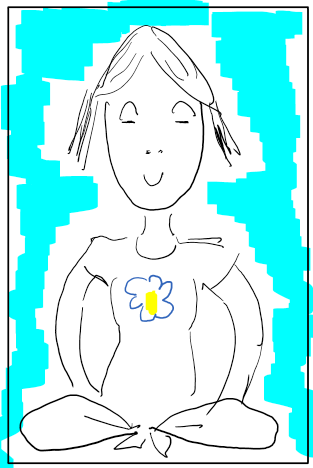Vipassana is the practice of mindfulness. It is also a way of living. At the core, it is a method that helps us attain Inner Balance.

Imagine being in a boat on a rocky sea. Our life – our personal experience is bobbing up and down like the boat in the rocky sea of Samsaara. We have to learn to ride the waves to prevent ourselves from drowning.
Vipassana teaches us how to accept the vagaries of life. Like a boat, it helps us remain afloat. We accept the ups with equanimity and so do we accept the downs.
Every single moment of our life, we experience. We cannot but help that. We do have some ability to change our experience. The Upanishads says our experience, our life’s destiny, stems from our desires, which dictate our actions. So, we all have some ability to control our destiny. As with the boat, our actions can prevent our life from drowning. But again, we may not be able to stop it from rocking. Riding the waves of the Sea of Life may get rocky and we just have to accept it. We have to not only accept it physically but also intellectually and emotionally.
Now, intellectually, we may accept this fact. But our physiology may not know that. Our habits and past experiences may overtake any intellectual sermon we hear. Just imagine you are sitting at your desk when you get an email. Maybe it’s from your boss or someone you’ve had a bad experience with. Even before you realize, you clench your jaw and your neck muscles get tensed.
Like author Malcolm Gladwell, explains in the book, Blink, our body reacts even before we know it. Even before we can intellectually acknowledge fear, or tension, our body has already reacted by increasing our heart rate and perspiration.
On an intellectual level, we can try to regain composure once we realize the imbalanced state we are in. But many times, we don’t even realize that we are imbalanced. It’s even more difficult to realize, when our imbalance in internal, mental, emotional. Even a few days of imbalanced posture can hurt your back. Imagine the amount of damage an imbalanced mind can do – especially when we don’t even realize it. Before we know it, we form bad habits that reinforce themselves every time we are in a similar situation.
Most of us carry this baggage with us. We work hard to bravely try and keep our imbalanced life-boats from capsizing. In the process, strain, tension and stress enter our lives creating a vicious cycle that puts us out of balance even more.
Practising Vipassana helps us become aware. In fact, Vipassana is essentially to be aware. To observe. Everything. We observe something, and then we observe our reactions – and here’s the best part, we let go of our reactions. We don’t let our reactions and reactive thought perpetuate. We observe, we react, we observe our reactions, we let go. This is Vipassana at its core.
How does it help? When we observe and let go, we are imbibing the fact that everything is but ephemeral. Our reactions don’t last forever. They come…and they go. Action and reaction keep coming and going. We remain.
Vipassana starts with us focusing on Prana – the life force – our breath. The Upanishads have a story where each of our senses try to invoke the Supreme Being through yagna and get corrupted by the demons. But Prana, our life-force, does not. Our breath does not have an ego. There’s no “I” in breath. And there’s no permanence – our breath comes, our breath goes. When we truly internalize this aspect of life we move closer to attaining Inner Balance.
I will cover the practice of Vipassana in more detail in a future post. May you live a balanced life.

Leave a Reply